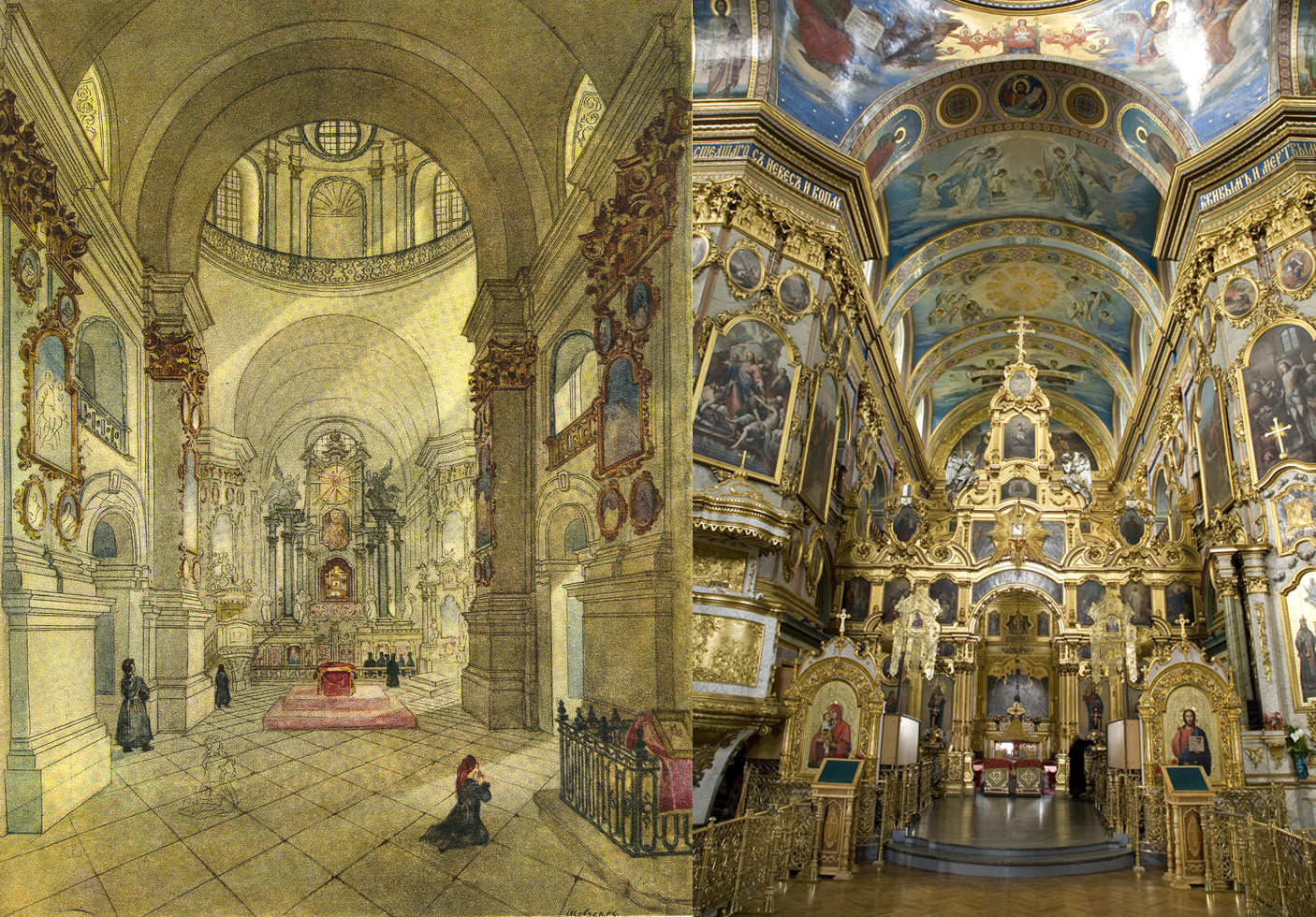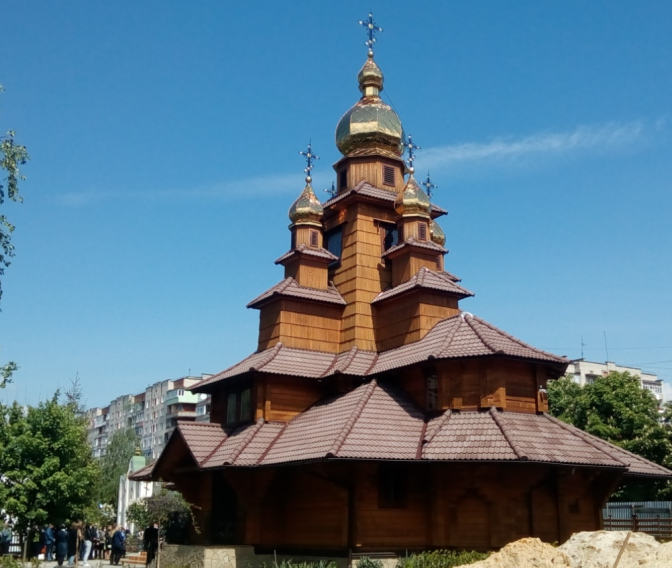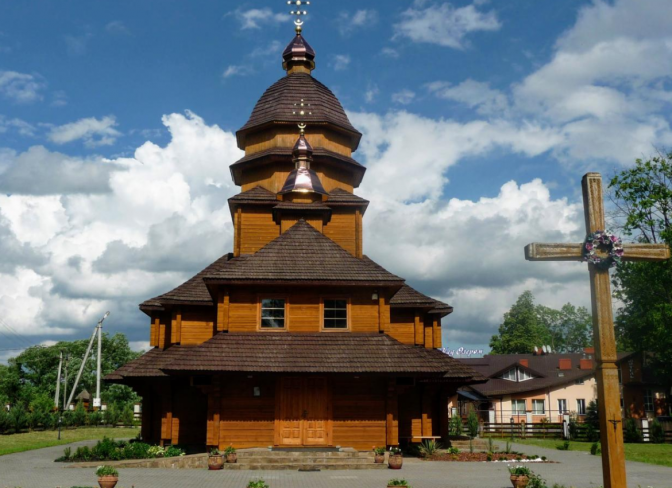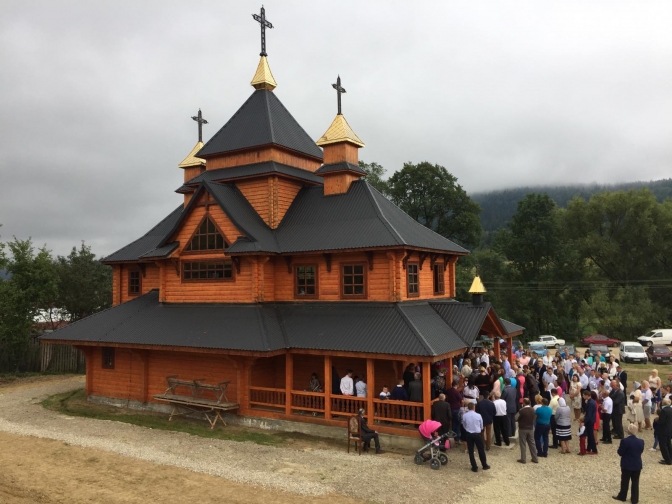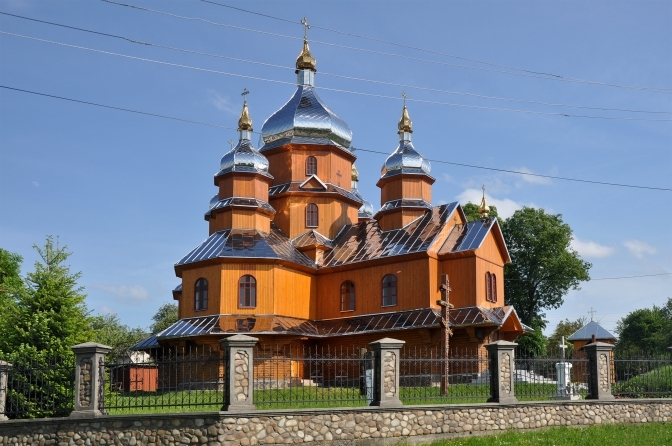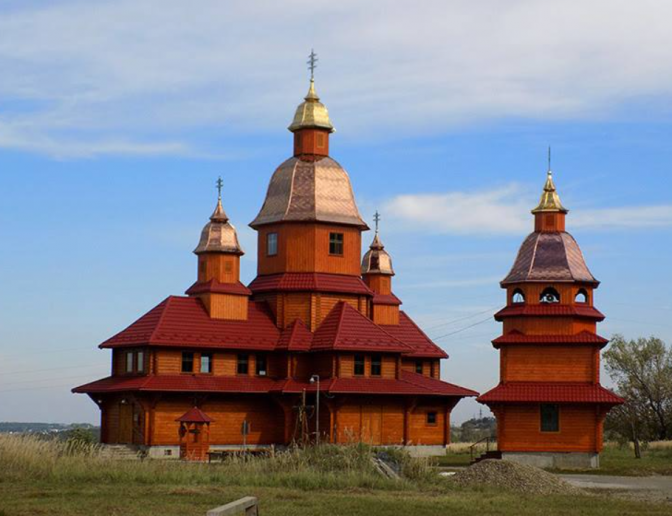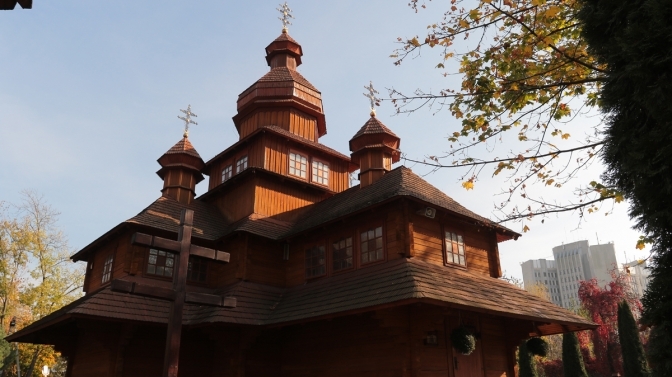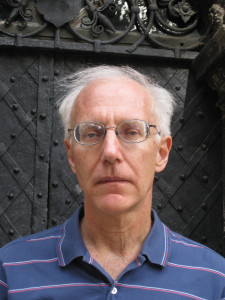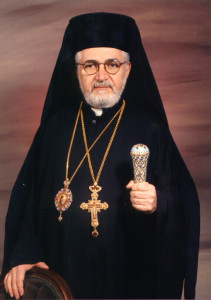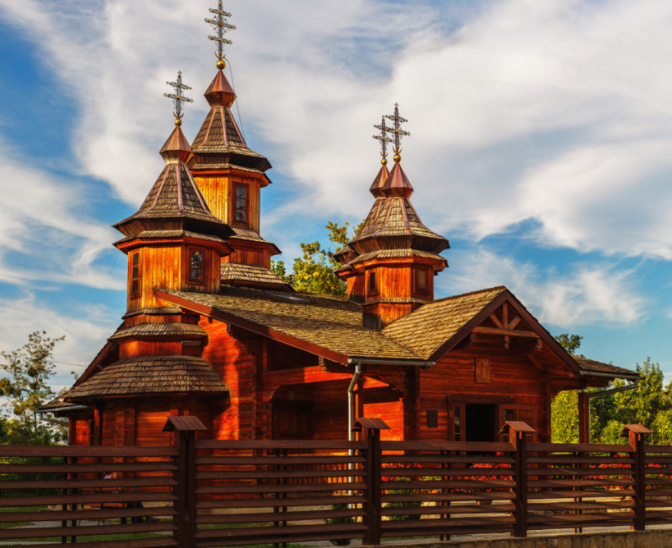 «Wood is warm and has its own energy. It accompanies us from birth to death, from the cradle, spoon, bed, closet, table, chair and to the grave. Icons are painted on wood, iconostasis are carved from it. It is present in all spheres of our life», – Roman Sulyk
«Wood is warm and has its own energy. It accompanies us from birth to death, from the cradle, spoon, bed, closet, table, chair and to the grave. Icons are painted on wood, iconostasis are carved from it. It is present in all spheres of our life», – Roman Sulyk
In Ukraine, wooden architecture is represented not only by ancient, centuries-old churches and houses and collected not just in museums of folk architecture. There are modern architects who create something new and quite useful. One of these few specialists is Roman Sulyk from Lviv, a historian of church construction who has been designing wooden temples and bell towers for 20 years.
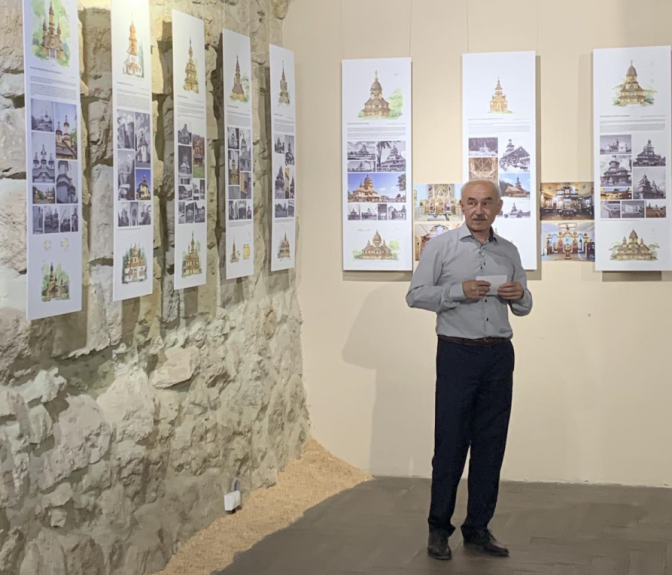 Mr. Roman, could you tell us what led you to the project of the first wooden temple?
Mr. Roman, could you tell us what led you to the project of the first wooden temple?
A long time had passed before I came to design wooden temples. I studied archeology for 17 years under the direction of Mykhailo Rozhko. We explored the Tustan fortress, which was also made of wood. We studied the traces of fixation – grooves carved into the rock – analyzing them, and were engaged in the reconstruction of this fortress. I already liked wood at that time.
And during the expeditions, I spent a lot of time researching wooden churches and bell towers in the Carpathian mountains. I love it very much. I felt happy finding old items, which helped me learn how masters worked, how these things were made. I first realized the genius in the simplicity of masters’ work while restoring the roof over the well in Urych, near Tustan. The study of folk art has contributed a lot in my life.
Later, after I finished my job in the Institute of Social Sciences in the Department of Medieval History, my colleagues invited me to the Department of Architecture of the Lviv Archdiocese of the Greek Catholic Church. There, the opportunities to explore wooden churches and bell towers have increased significantly.
At that time, a complete expedition took place, together with the famous photographer Volodymyr Olkhomyak, an archivist, art historian, researcher, and our «walking encyclopedia» Volodymyr Vuytsyk, as well as with the director of the Central Historical Archive Orest Matsyuk. This was a path to the design itself, to my work in the specialty. It started with small things.
Twenty years ago, I was approached by Father Nikanor Loik, who is now the rector of the Kyiv Cathedral of the Resurrection of Christ (Greek Catholic), and was asked by him to make a holiday chapel with a bell tower at the Studite monastery in Dora, Ivano-Frankivsk region. It was my first project of a wooden sacred building. It was built in 2000. At the same time, the rector of the Univ Lavra Father Benedict (now the Eparch of Chicago, Benedict Aleksiychuk), came up with the idea to build a wooden church at the Studite monastery in Zarvanytsia. At that time, there was only a monastery, and only a small chapel in the monastery’s basement served like a church, which the monks arranged with their own effort.
It was difficult to determine what type of church it should be, I went through many different versions of churches in my head and finally settled on the cross-domed plan of the building. Why this? When I was still working at the Institute, I researched the subject of the Maniavskyi hermitage (Ivano-Frankivsk region). I was curious why the church of cross plan was there in the hermitage and why such «fashion» spread in the Hutsul region in general.
It turned out that Yov Kniahynytskyi, the abbot of the hermitage at that time, approached his acquaintance, the abbot of the hermitage in Mezhyhirya (Kyiv region), with whom he studied on Mount Athos, [the autonomous Greek peninsula home 20 Orthodox monasteries]. There, in Mezhyhirya, the temple was cruciform in plan, modeled on Greek shrines, and he built his temple in this manner. When comparing the church from the engraving in Mezhyhirya and the temple from the Maniavskyi hermitage (it was later moved to Nadvirna), they are almost identical. Apparently, this shrine became the prototype of the later wooden cruciform churches in the region.
Since then, how many temples have been designed and how many built, in particular in Lviv?
I designed a total of 19 churches, including three in Lviv, 7 bell towers, and 11 chapels.
I am currently working on a large project to restore the so-called «Calvary» (representation of Christ’s way before crucifixion) in the village of Hubychi in the Drohobych region. This place is historically known as the Calvary of Patzlav. A chapel, which was to stand in Lviv in Shevchenkivskyi hai (forest grove park), has already been moved there and installed. Despite the presence of sacred buildings, we will develop a museum there and initiate a festival of Boyko cuisine to displace the culture of «shashlik» [barbecue] from Ukraine and revive something specifically Ukrainian.
There are probably not so many masters who build wooden temples after the Soviet period. How did you manage to solve this problem, how is this construction being revived?
Once upon a time there were brigades of people in the villages who knew how to build houses well, and they were called to undertake the construction of temples. There were no academic schools of wood construction. Skills are ingrained in the minds and hands of folk artists, who pass them on to their students.
During the Soviet period, the tradition of designing religious buildings was generally eliminated. This issue wasn’t even considered. Wooden churches were more fortunate because the tradition wasn’t difficult to revive, since the construction in wood is originally associated with folk architecture: the principle of construction from log is identical for a fortress and a house or religious building. The principles of construction are the same.
As for the shape and type – the tradition is also developed: there are three-carved, five-carved temples, cruciform in plan. Stone architecture is more complex, you need to feel the space, proportions, heights, etc. Of course, when designing a brick temple, the architect can afford to vary much more with the space and capabilities of the material compared to what can be made of wood. If the length of wooden walls, i.e. logs, can be increased and developed – it’s almost impossible to do so with the dome, the length of the beams will not allow it, so the wooden temples are quite small.
The situation with the performers was difficult in the beginning: it was necessary to look for people and seek them in the Hutsul region, because that is where the tradition of working with wood was preserved. Different things were actually learned by me from these folk masters. At first, it’s difficult with masters in the sense that you don’t know the result of what quality they will provide.
We tried to cooperate with different teams before finding those who are really professionals. We came across people who said: «Why do we need drawings, we know how to do it ourselves». A few years later, their work had to be corrected… A sustainable team, in the sense of collaboration – and these are quite young guys aged 20-25, led by an experienced senior master, Yaroslav Mazur – was found when they set about building a church on Stryiska street in Lviv. We are also satisfied with the team of Mr. Mykhailo Heradzhuk.
What is special about wood?
In today’s terms, wood construction is a fantastic energy-saving technology, because no matter how hard we try, we use a tiny unit of energy to get it, compared to how much it costs for bricks, concrete, plaster, blocks, metal.
When we talk about energy saving, we do not mean heat saving (although this is also the case), but in order to produce a unit of material that will retain heat in the future, we need to spend energy, i.e. it’s already energy consuming at that stage. And with wood it’s completely different. Wood uses only water, earth and sun to form itself as a building material. It’s enough for a person to plant, cut, and process it.
However, now the forest is sick, poor, there’s not enough thick wood. It should also be understood that not all wood is used to make a beam, the core is cut off, because it dries more slowly than other parts, so the wood cracks horizontally. To avoid this, masters try to cut along the edge of the core, and in general, ideally – to discard it. To cut like this, you need to have good wood. The trunk should be 60 centimeters in diameter. Now, there is no such tree.
Wood is a cheap material, accordingly. The stone church needs to be plastered inside and outside, decorated, the roof should be made of metal – and there is no such need if you use wood.
Also, the thermal conductivity of a wall made of beam eighteen centimeters in diameter is equated to the thermal conductivity of a wall of one and a half bricks thick. A row of bricks with mortar and a row of beams are of very different estimates and very different rates of construction. Sometimes, the iconostasis for a large brick church can be more expensive than the entire wooden church.
To build from wood is much faster than from bricks or blocks. What were the shortest periods of time the temples were built?
During the day, the masters knit a row of beams 18 centimeters high around the perimeter of the temple, in ten days it’s 1.8 m, in another ten days they set the walls of 3.6 m, and then – the rafters, roof, domes. Construction is going very fast.
The most record-breaking is the church in Ivano-Frankove (a village in the Yavoriv region – ed.) – built during two months, two weeks and two days. This is a purely wooden structure, without a foundation. A holiday chapel was also built very quickly in the neighboring village of Stradch in two weeks. We had a month and a half to complete the project and its implementation.
Mr. Roman, what rules do you follow when designing the shrine, making sure that it fits harmoniously into the environment?
Given the fact that I adhere to folk styles – of course, I add something from myself, but not so that the temple couldn’t be recognized in the building – I take into account the peculiarities of the temples of specific regions. When we designed the church in Ivano-Frankove, we made it with a helmet-shaped, wide, squat dome, typical of the Yavoriv area, for its oldest three-part churches.
It’s important for the temple to make the shape of the dome correctly, it should be well perceived from the ground, not in the frontal projection on the project, because the point of perception is from below, from the height of the human eye. The project can bring perfect proportions, but when the temple is built – it will be ugly if you miss this moment.
Plus, the responsibility of the masters to do everything from the drawing. In particular, It’s taken into account that the shingles have a decent thickness, unlike metal. Straight segments of shingles should form the character of the dome. It is lighter with metal, it bends, and shingles are not plastic.
It seems that in other parts of Ukraine, in particular Eastern, Central, the tradition of erecting wooden shrines is not reviving to the same extent as in the West, right?
Eastern Ukraine was very rich in wooden temples, they were built en masse during the Cossack period. These monuments are collected and displayed in the Museum of Folk Architecture in Kyiv. They are different from our temples because the space in which these temples were built is different.
In Galicia [where Lviv is], the buildings – both rural and urban – are very dense, the gardens are finely divided, and in the Eastern Ukraine there’s a completely different space. Accordingly, this space, the steppes, and the lack of a small landscape gave rise to the grandeur of the churches they built: high walls, many domes, from five to twelve.
One example of such a church in slobozhanskyi (referring to the region in Eastern Ukraine) style has been preserved in the village of Yosypovychi in the Stryj district. These are the former lands of Prince Vyhovsky. Its origins and, consequently, architectural preferences are reflected in it. Previously, there was an old church, from which there are doors and gates with the inscription that the wife of the voivode Vyhovsky founded this church.
Currently, I haven’t seen the mass erection of wooden temples in the East. Probably, it’s due to the war and various frictions and intrigues connected with the Moscow Patriarchate. It is safer to build a brick temple. Even in our country, when the war started, a series of arsons of wooden churches took place in Vorokhta, in Dora, and here in Lviv as well.
Why have we historically built more wooden churches than brick ones?
The reason for this is political conditions. Ukrainians were never considered the ruling class on their land, even though they were indigenous here. They were poor, and what can poor people do? To pull some of that forest and build a temple on their own.
Compare our Galician churches with churches and synagogues. There is a difference. Where is the Ukrainian temple? Perhaps Sophia of Kyiv and Cossack huge baroque temples and monasteries. The greatness was already there, and we in Galicia were dissolving among the Poles.
The future is new churches, in particular brick ones, but for this, the philosophy of the customer must change. We need to go through a period of restoration and formation, and then take the next steps in architecture.
Wooden temples were usually built in villages, which is not an urban tradition. You are now acting differently, so Lviv became diversified with such shrines. What do they give to the city, to the community?
There were voices against the construction of wooden temples in the city, there were professors of the Polytechnic, who said that it made no sense to build «barns in the cities», because this is the past…
The three churches I designed for Lviv are student churches. The first one is the church of the Ukrainian Catholic University (UCU) on Stryiska street, second is the student church of the Forestry University and third is the same one for the Polytechnic University. These are small structures designed to help the Church reach young people.
I can’t imagine how a brick church could be built on Lukasha or on Prirodnia streets, on the plots that the city has set aside in small squares. There is too little space. Since these are also chaplaincy centers, it would be extremely difficult to find funds for brick shrines.
As for the UCU church, it was supposed to be a symbol of the beginning of the university’s construction, and it fulfilled this mission. Other points: the neighborhood of a large administrative building – the tax office – is a bad background for a brick shrine, and in this area, a lot of cables lie under ground, including government ones, it would be unrealistic to dig a pit and lay the foundation for a massive building. However, the wooden church looks good against the background of Stryiskyi Park.
These are purely technical reasons that prompted the construction of several wooden temples in Lviv.
On the other hand, they are islands of a special atmosphere. Wood is warm and has its own energy. It accompanies us from birth to death, from the cradle, spoon, bed, closet, table, chair and to the grave. Icons are painted on wood, iconostasis are carved from it. It is present in all spheres of our life.
Interviewer Lida Midyk
Translated by Vitalii Holich
Main photo: Pavlo Lys
Full or partial publication of the text without the written consent of the editors is prohibited and is considered copyright infringement.
Source: www.tvoemisto.tv
